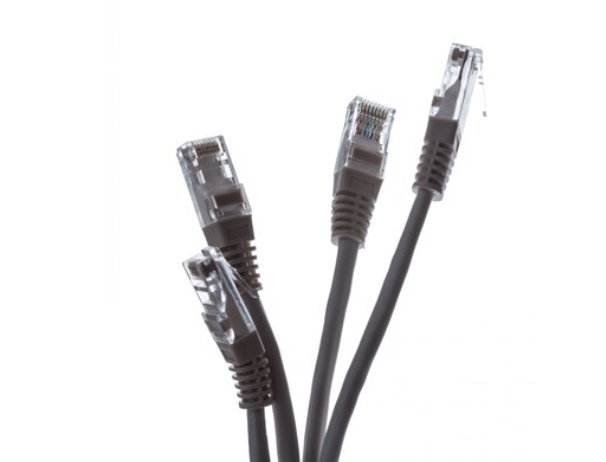
Ever wondered why Ethernet cables come in so many colors? While the functionality of cables like Cat6 Plenum 1000ft doesn’t change with color, the choice of color can significantly impact organization, troubleshooting, and use in specific environments. From IT professionals managing data centers to home users setting up networks, understanding the role of Ethernet cable colors can make tasks more efficient and straightforward.
If you’re looking for high-quality options like Cat6 Plenum Cable, it’s also essential to understand how color-coding can influence your network setup.
The Purpose of Ethernet Cable Colors
The variety of colors for Ethernet cables serves a practical purpose, primarily for organizational and identification needs. For instance:
Data Centers and Offices: Color-coding helps technicians quickly identify connections. For example, blue cables might represent internet connections, while green cables could indicate local area networks (LANs).
Troubleshooting: When dealing with complex setups, identifying a specific cable is faster if each type has a dedicated color.
Home Networks: Even in smaller setups, color-coded cables reduce confusion, especially for DIY users setting up their routers, switches, or access points.
While color doesn’t affect performance, using high-grade materials like Cat6 Solid or Cat6 Bare Copper ensures consistent network speed and durability.
Common Ethernet Cable Colors and Their Uses
While there is no universal standard for cable colors, some general practices are followed in specific industries. Here are some examples:
Blue Ethernet Cables
Blue cables are commonly used for network connections like DSL or cable modems. They signify internet or external network connectivity in many setups.
Yellow Ethernet Cables
Often associated with POE (Power Over Ethernet) devices, yellow cables connect equipment such as IP cameras or wireless access points.
Green Ethernet Cables
These are frequently used for crossover connections, linking two devices directly without using a switch.
White or Grey Ethernet Cables
White Cat6 Bare 1000ft cables are popular for home networks and office setups, blending seamlessly with walls or desks for a cleaner look.
Red Ethernet Cables
Red cables often signal critical systems or networks that require immediate attention during troubleshooting.
By choosing products like Cat6 Copper or Plenum Cables, you ensure the highest quality performance regardless of the color.
Do Colors Affect Cable Quality?
Absolutely not. The color of an Ethernet cable is purely aesthetic and organizational. The performance of a cable depends on its construction and materials. For example:
Plenum Cable: These cables are designed for installations in air-handling spaces and meet strict fire safety regulations.
Cat6 Plenum Cable: Specifically built for high-speed networks, it supports frequencies of up to 550 MHz and is ideal for environments requiring advanced safety features.
For reliable and durable connections, always consider cables like Cat6 Plenum 1000ft with solid copper construction.
Choosing the Right Ethernet Cable for Your Needs
While cable color matters for organization, the technical specifications should be your top priority. Here’s what to look for:
Plenum-Rated Cables: If your installation is in ceilings or walls, plenum-rated cables are necessary to comply with safety codes.
Material: Go for Cat6 Solid or Cat6 Bare Copper cables for long-term durability and top-notch performance.
Environment: For home networks, White Cat6 Bare 1000ft cables might be the best option for aesthetic reasons. On the other hand, brightly colored cables are better suited for data centers or offices.
Why High-Quality Ethernet Cables Matter?
The performance of your network heavily depends on the quality of your cables. Poor-quality Ethernet cables can lead to signal interference, slower data transmission, and even frequent disconnections. By investing in products like Cat6 Plenum Cable, you ensure that your network operates at maximum efficiency.
Companies like Monk Cables, a trusted provider, offer a wide range of high-quality options tailored to meet your networking needs. Whether you require Plenum Cables for commercial use or robust Cat6 Solid cables for home setups, they have you covered.
How to Implement Color-Coding in Your Network?
Setting up a color-coded system is straightforward:
Define a Color Scheme: Decide on a standard for your setup. For instance, use blue for external connections and white for internal LANs.
Label Your Cables: Adding labels to your cables further enhances organization, especially if multiple colors are used.
Stick to High-Quality Options: Opt for cables like Cat6 Bare Copper or Cat6 Plenum Cable to ensure long-lasting performance.
Final Thoughts
While Ethernet cable colors don’t impact technical performance, they play a crucial role in network organization and troubleshooting. Choosing the right color, combined with high-quality materials like Cat6 Plenum 1000ft, can make a significant difference in managing your network efficiently. Whether you’re a professional or a home user, understanding these aspects ensures smoother installations and fewer issues in the long run.
For reliable cables that meet all your needs, consider trusted brands like Monk Cables, offering a wide range of options to suit every requirement.





Leave a Reply